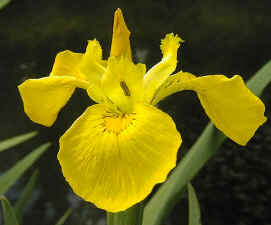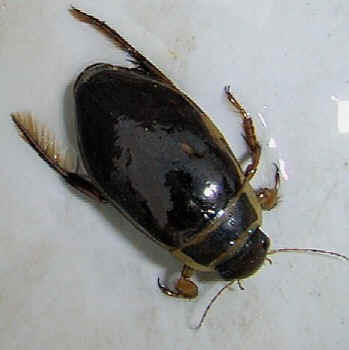 |
|
| Yellow Iris which is also known as Yellow Flag is a common plant of wetlands.
It often forms dense stands of vegetation and grows to about 1.5m. The plant is one
of the first signs of spring as the pale green thin leaves emerge from the drabness of the
winter vegetation. Yellow Iris prefers to grow at the water margins although it can also
be seen to a lesser extent in the drier areas. Plants such as Yellow Iris and Branched Bur-reed provide useful supports for emerging dragonflies and damselflies in the wetland. The young stages of these insects live in the standing water underneath. They climb from the water on vertical supports such as the plant stems, when they are big enough to turn into adults. The adults will then take to the air and hunt insects.
|
|
 |
Many other insects also benefit from Yellow Iris. The bright flowers attract a range of pollinating insects whilst caterpillars feed on the leaves. Beneath the water, female Great Diving Beetles (left) lay their eggs in plants such as Yellow Iris. They lay the unusually large eggs, one at a time in the leaves. Each egg is laid in a specially hollowed out chamber. There, the egg is not only protected in the leaf, but more importantly, it is able to absorb some of the oxygen which is produced by the plant. It will take several months for the female Great Diving Beetle to lay her 1000 eggs, in a range of different plants in the water. |